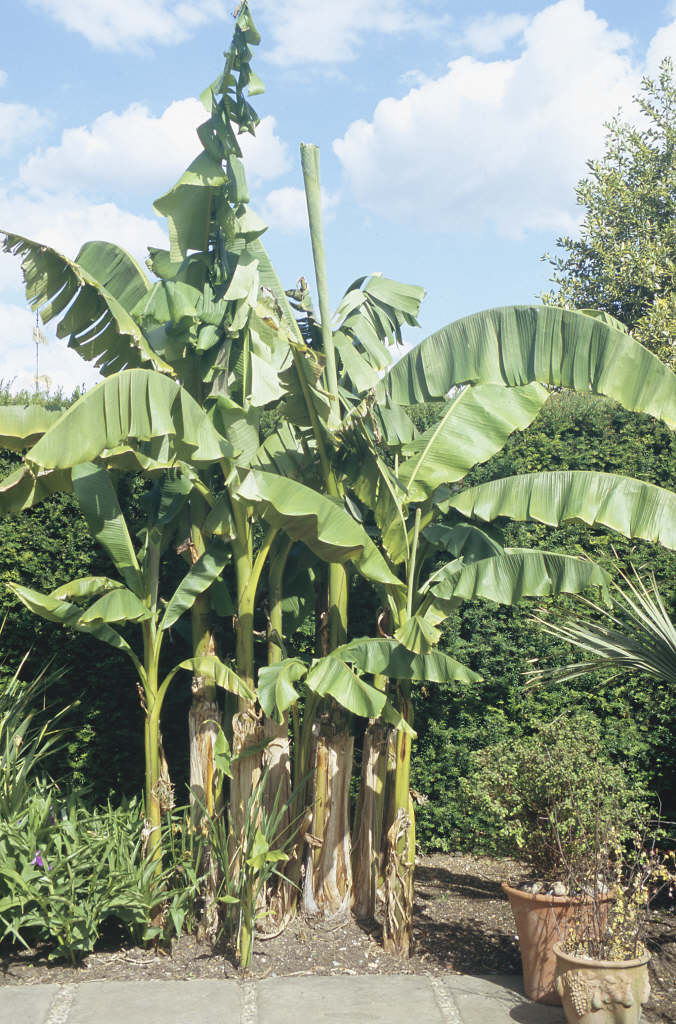Musa basjoo
Japanese banana
A suckering evergreen perennial to 5m tall, with arching lance-shaped leaves to 3m long, and drooping terminal spikes of cream flowers in summer, sometimes followed by inedible green fruits to 6cm long
Size
Ultimate height
2.5–4 metresTime to ultimate height
5–10 yearsUltimate spread
1.5–2.5 metresGrowing conditions
Moisture
Well–drainedpH
Acid, Alkaline, NeutralColour & scent
| Stem | Flower | Foliage | Fruit | |
| Spring | Green | |||
|---|---|---|---|---|
| Summer | Cream | Green | ||
| Autumn | Green | |||
| Winter | Green |
Position
- Full sun
Aspect
South–facing
Exposure
Sheltered Hardiness
H2Botanical details
- Family
- Musaceae
- Native to GB / Ireland
- No
- Foliage
- Evergreen
- Habit
- Suckering
- Genus
Musa are suckering evergreen perennials with very large, paddle-shaped leaves whose stalk-bases form a false stem, and clusters of tubular flowers with colourful bracts, followed by cylindrical fruits
- Name status
Correct
- Plant range
- China
How to grow
Cultivation
For banana cultivation under glass grow in peat-free, loam-based potting compost in full light with shade from hot sun; repot every other year, in spring. In warmer parts of the country for outdoors grow in a sheltered position in humus-rich well-drained soil in full sun
Propagation
Propagate by seed as soon as ripe at 21-24°C (70-75°F); presoak spring sown seed for 24 hours. Separate suckers in early spring, removing older leaves or divide established clumps every five years
Suggested planting locations and garden types
- Patio and container plants
- Wall side borders
Pruning
See banana cultivation notes (above) for wrapping and overwintering
Pests
Glasshouse red spider mite, mealybugs and aphids can be troublesome under glass
Diseases
Generally disease-free
Get involved
The Royal Horticultural Society is the UK’s leading gardening charity. We aim to enrich everyone’s life through plants, and make the UK a greener and more beautiful place.
